Fallacies
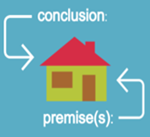 A fallacy is defined as a mistake in reasoning. Fallacies can be formal, i.e., a mistake made in the construction of an argument, or informal, i.e. a mistake made in the reasoning within the argument. Within this module, we will focus on informal fallacies. Note that as fallacies are flawed, they do not support ideas, arguments, or positions. Informal fallacies are better likened to cheap tricks or illusion - but don't be fooled. As noted earlier within this course, for an argument to work properly the conclusion must genuinely be supported by the premises offered. Remember the visual analogy of the argument as house!
A fallacy is defined as a mistake in reasoning. Fallacies can be formal, i.e., a mistake made in the construction of an argument, or informal, i.e. a mistake made in the reasoning within the argument. Within this module, we will focus on informal fallacies. Note that as fallacies are flawed, they do not support ideas, arguments, or positions. Informal fallacies are better likened to cheap tricks or illusion - but don't be fooled. As noted earlier within this course, for an argument to work properly the conclusion must genuinely be supported by the premises offered. Remember the visual analogy of the argument as house!
Common Informal Fallacies
In what follows, some of the more frequently encountered informal fallacies are presented.
The Ad Hominem Fallacy

In this fallacy, you attack your opponent's character or personal traits in place of addressing their argument. If used well, this fallacy can undermine a position without engaging it. Social media exchanges and political debates are great places to catch this fallacy in action. Honestly, it is much easier to name-call than to engage an idea. But this particular fallacy is far from a critical consideration of a position.
The Bandwagon/ Appeal to Popularity

In this fallacy, an appeal to a fact that is commonly accepted as true is used to get around having to demonstrate the truth of the fact. But no matter how many shares or likes a "fact" may have, the need to demonstrate truth remains. The bandwagon fallacy is also known as an appeal to popularity. A popular idea is not necessarily an idea that should be accepted uncritically!
The Appeal to Ignorance Fallacy

In this fallacy, you claim that the burden of proof lies not with the person making the claim, but with someone else to disprove it. But the problem with this fallacy is that the burden of proof lies squarely on the shoulders of the person making the claim. You can not make a point by suggesting that the point has not been disproven!
The Appeal to Authority Fallacy

In this fallacy, you claim that because an authority claims something is true, it must therefore be true. Admittedly, there are cases in which an expert's opinion should be accepted. But this fallacy is present when a claim made outside of the expert's field is used as evidence. Often celebrities are used to sell products. But very rarely are the celebrities actual experts on the items being sold. In other cases, well-known experts can be used to lend credibility to a view that is not within that expert's field.
The False Cause Fallacy

In this fallacy, a perceived relationship between things is taken as evidence that the one is the formal cause of the other. But as you have probably heard, correlation is not causation. In some cases, what appears to cause something is merely coincidental. Superstition is one common example of false cause.
The Slippery Slope Fallacy
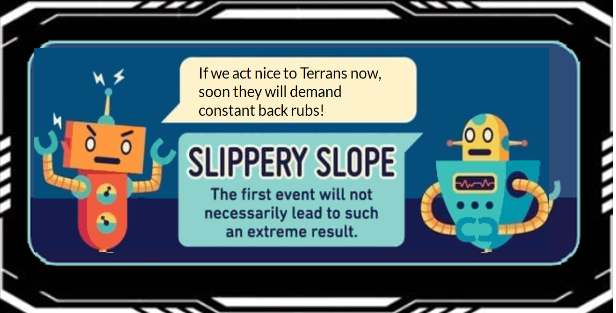
In this fallacy, a relatively small first step or action is taken as evidence that some significant (usually negative) effect will occur. This fallacy is characterized by the lack of sufficient evidence to support the claim that a specific course of action will lead to a series of events culminating in an extreme outcome.
The Begging the Question Fallacy
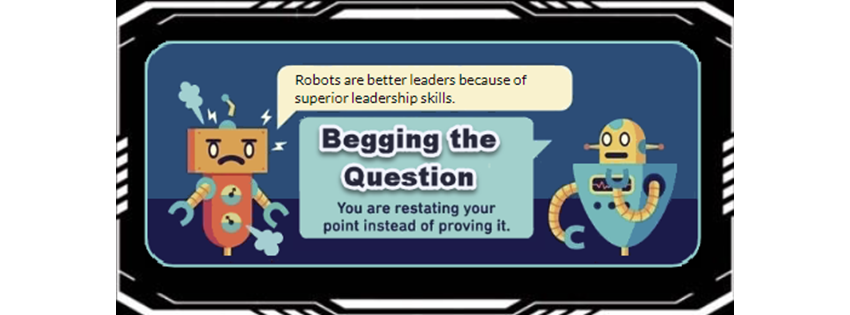
In this fallacy, a circular argument offers the conclusion to support the conclusion. The problem is that a conclusion needs evidence for support - simply restating the point does not qualify as support. FYI - to "beg the question" does not mean that there is a serious question that must be answered!
The False Alternatives Fallacy
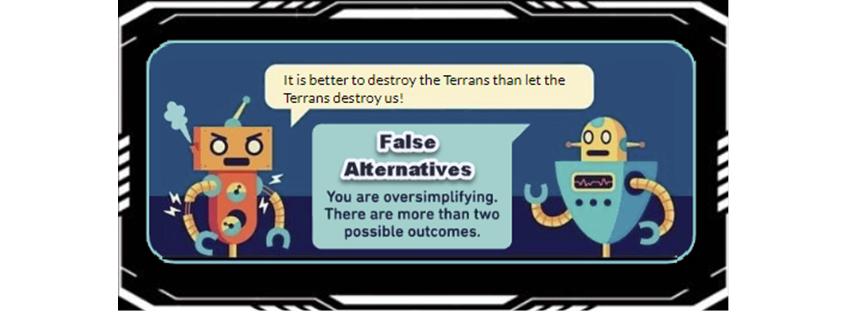
In this fallacy, two alternative states as the only possibilities when in fact more possibilities exist. This fallacy is also known as the false dilemma or as the "black-or-white" fallacy. By offering two typically extreme possibilities, the discourse can be influenced in such a way as to mislead the argument.
The Straw Man Fallacy
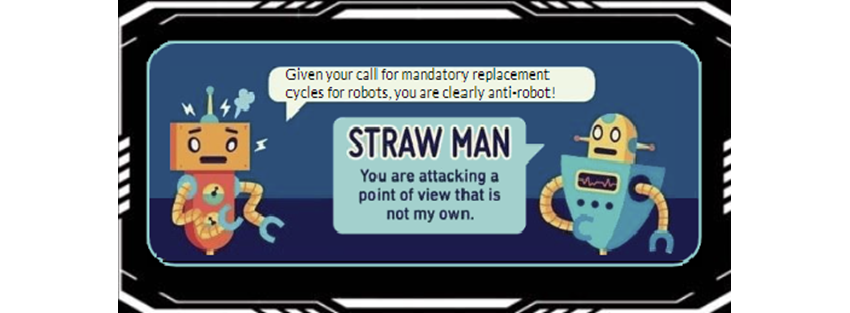
In this fallacy, a position is misrepresented in order to make the argument easier to refute. By exaggerating, misrepresenting, or simply making up your opponent's position, you can make you position seem reasonable. Clearly hiding the truth undermines rational debate.

Congratulations!
You have reached the end of Module 3. Please return to our course, and complete the short quiz on fallacies.